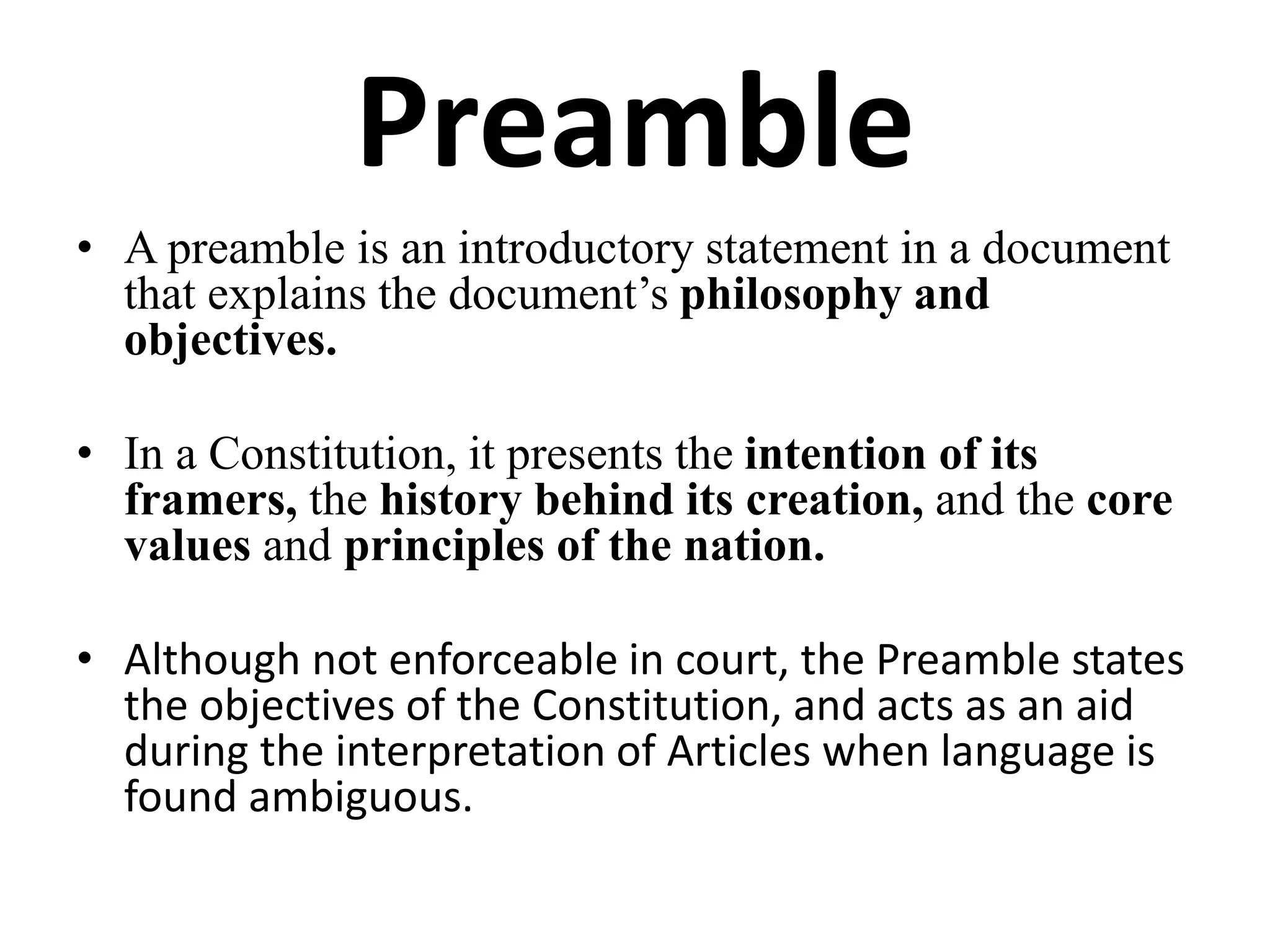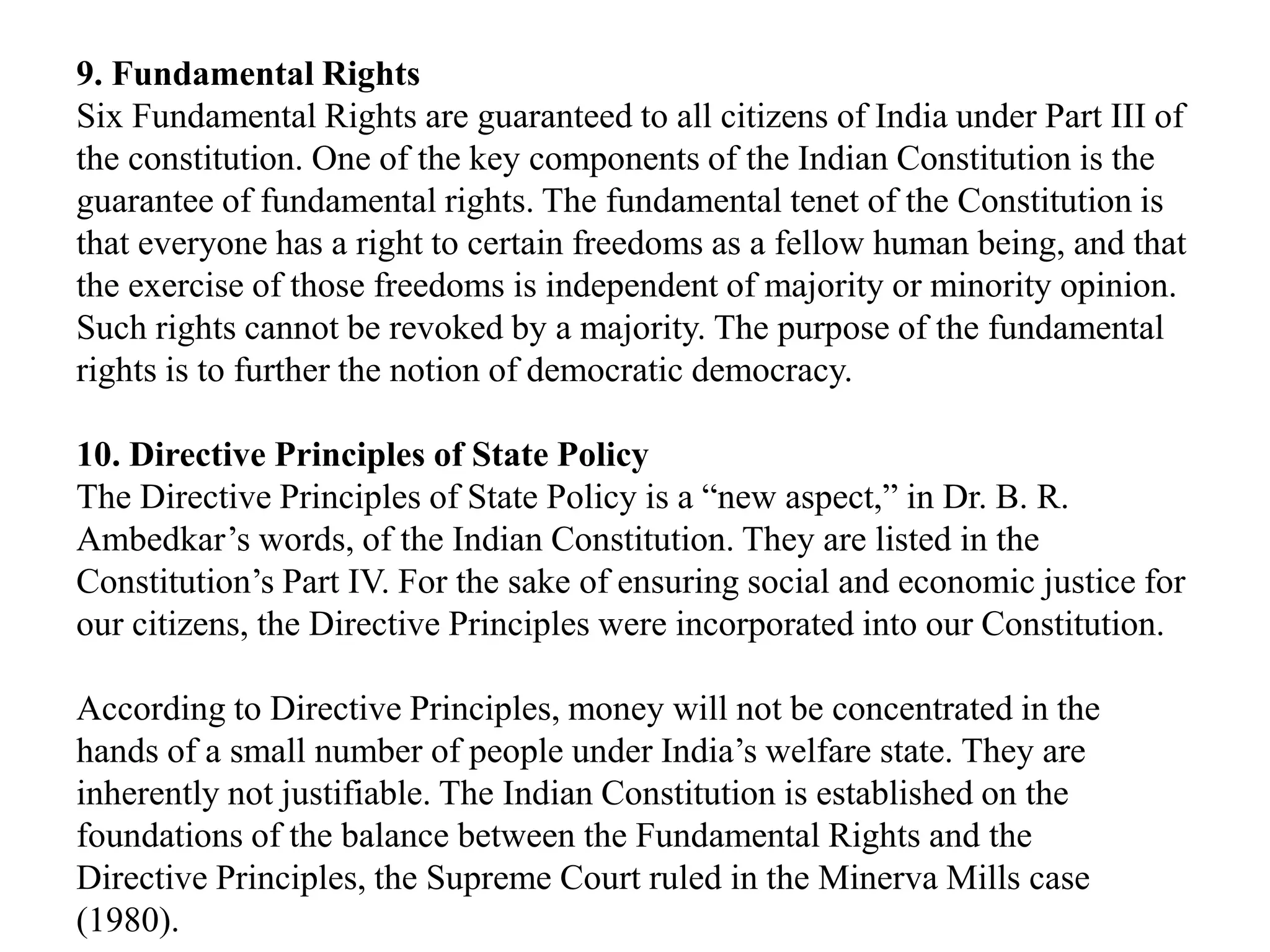The document summarizes key aspects of the Indian constitution's preamble and philosophy. It discusses how the preamble lays out the constitution's objectives of sovereignty, democracy, justice, liberty, equality and integrity. It notes that the preamble was amended in 1976 to add "socialist" and "secular". It also outlines some of the constitution's salient features, including that it is the world's longest written constitution, draws from various international models, blends rigidity and flexibility, establishes a federal system with a unitary bias, adopts a parliamentary form of government, synthesizes parliamentary sovereignty and judicial supremacy, upholds the rule of law, and establishes an integrated and independent judiciary.




![Text of the preamble
WE, THE PEOPLE OF INDIA, having solemnly resolved to constitute India into a
[SOVEREIGN SOCIALIST SECULAR DEMOCRATIC REPUBLIC] and to
secure to all its citizens:
JUSTICE, social, economic and political;
LIBERTY of thought, expression, belief, faith and worship;
EQUALITY of status and of opportunity;
and to promote among them all
FRATERNITY assuring the dignity of the individual and the [unity
and integrity of the Nation];
IN OUR CONSTITUENT ASSEMBLY this twenty-sixth day of November, 1949, do
HEREBY ADOPT, ENACT AND GIVE TO OURSELVES THIS CONSTITUTION.](https://image.slidesharecdn.com/coi2-240321035959-815702f8/75/Constitution-Salient-features-and-Preamble-5-2048.jpg)
















